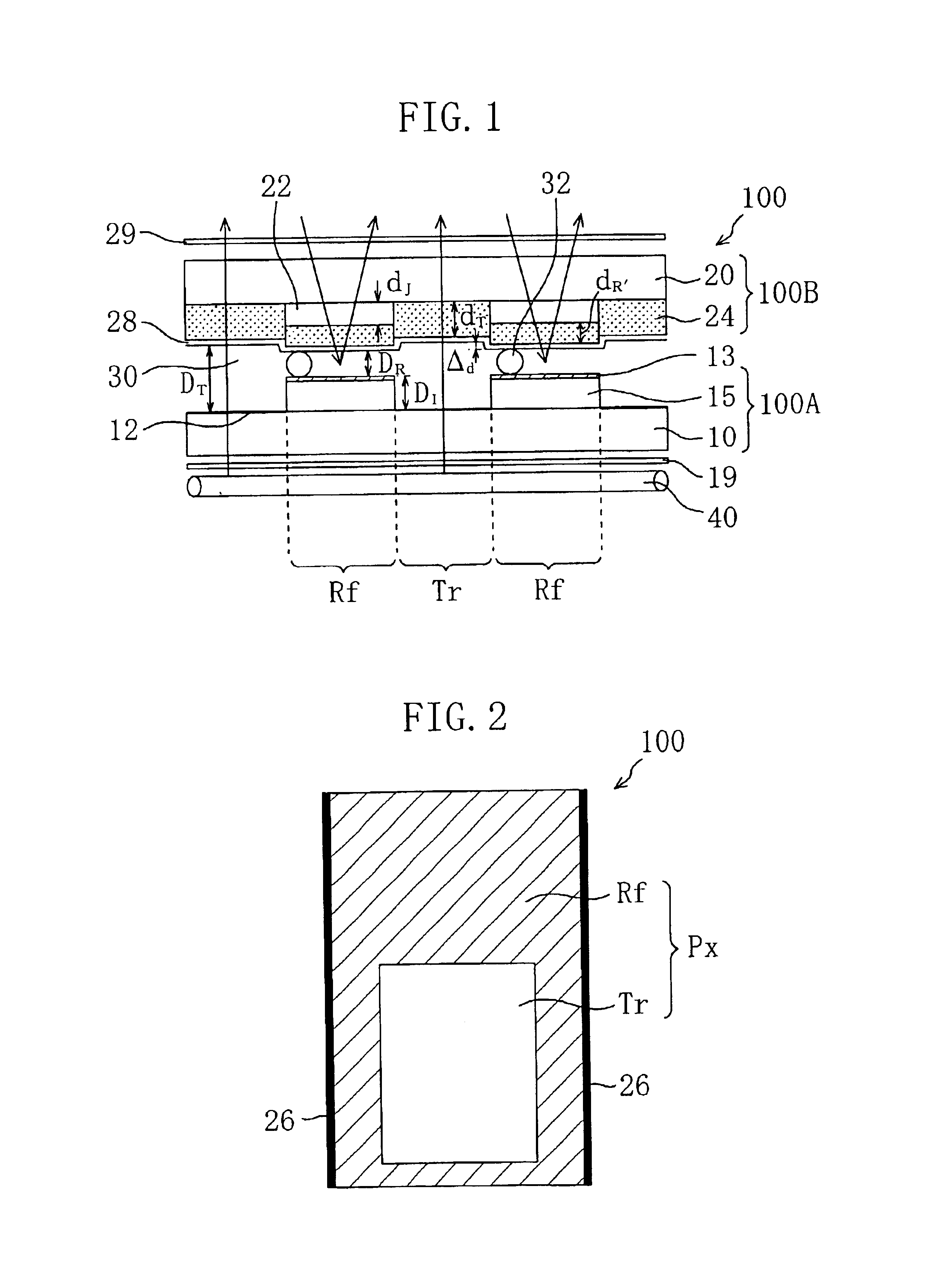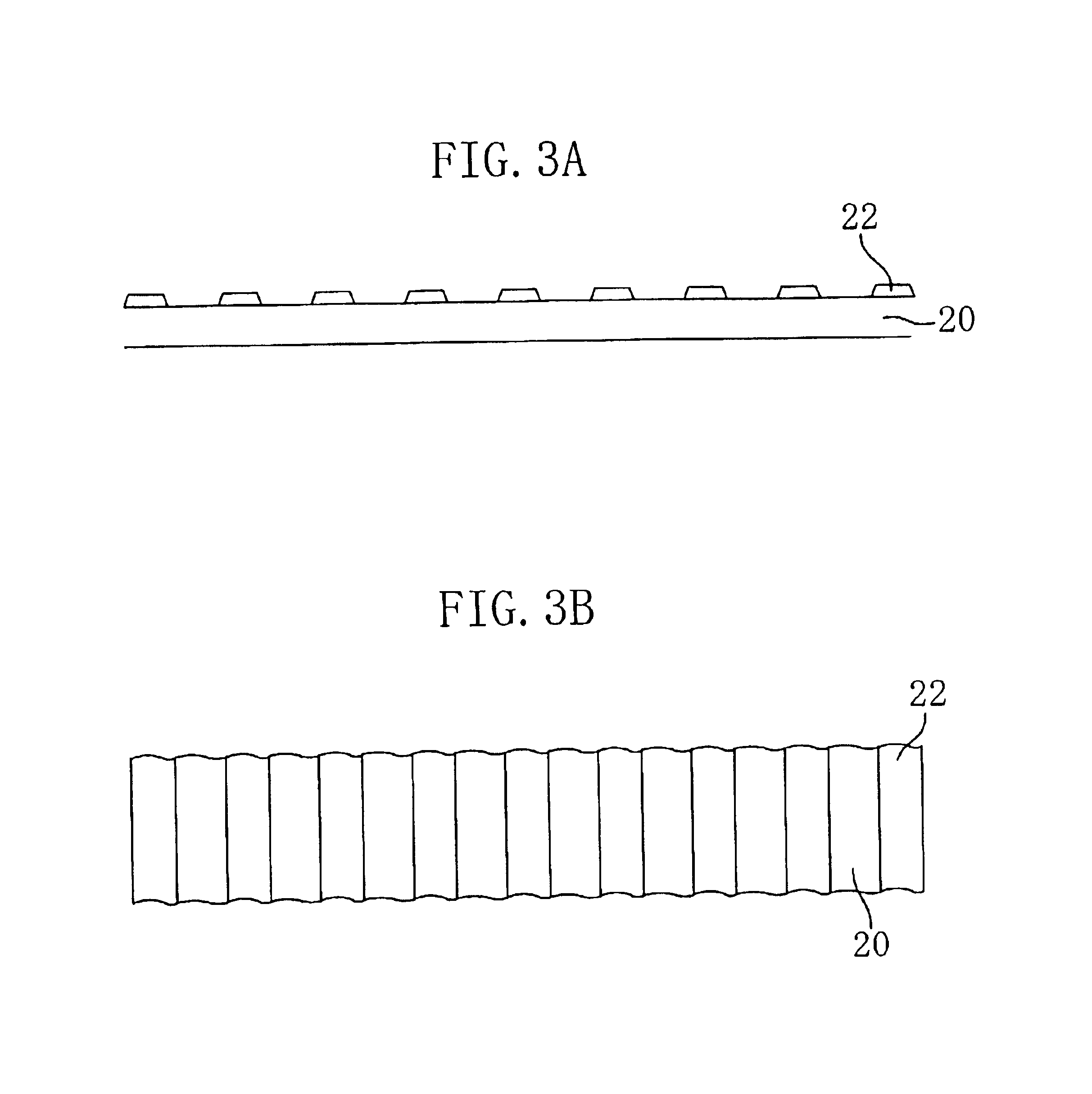Liquid crystal display device
- Summary
- Abstract
- Description
- Claims
- Application Information
AI Technical Summary
Benefits of technology
Problems solved by technology
Method used
Image
Examples
first embodiment
First, the structure of an LCD 100 according to the first embodiment of the present invention will be described with reference to FIGS. 1 and 2. FIG. 1 is a schematic cross-sectional view of the LCD 100. FIG. 2 is a schematic top view showing the structure of a single picture-element region in the LCD 100. In the specification, the minimum unit of display is referred to as “picture element”, and a region of the LCD which corresponds to a “picture element” is referred to as “picture-element region”.
As shown in FIG. 1, the LCD 100 includes an active matrix substrate (first substrate) 100A, a color filter substrate (second substrate) 100B, and a liquid crystal layer 30 interposed therebetween. Typically, the LCD 100 further includes a pair of polarizing plates 19, 29 and an illuminating device (backlight) 40. The pair of polarizing plates 19, 29 are provided on both sides of the LCD 100, and the illumination device (backlight)40 is provided outside the polarizing plate 19 so as to face...
second embodiment
FIG. 12 schematically shows the cross-sectional structure of an LCD 200 according to the second embodiment of the present invention. The LCD 200 of the second embodiment is different from the LCD 100 of the first embodiment in the structure of an active matrix substrate 200A. In FIG. 12 and the following figures, components having substantially the same function as that of the components in the LCD 100 of the first embodiment are denoted with the same reference numerals and characters, and description thereof is omitted.
As shown in FIG. 12, in the LCD 200 of the second embodiment, the level of the surface of the active matrix substrate 200A which faces the liquid crystal layer 30 is substantially the same in both the transmission region Tr and the reflection region Rf.
Moreover, in the LCD 200, the level of the surface of a color filter substrate 200B which faces the liquid crystal layer 30 is higher in the reflection region Rf than in the transmission region Tr. More specifically, t...
third embodiment
FIG. 17 schematically shows the cross-sectional structure of an LCD 300 according to the third embodiment of the present invention. The LCD 300 of the third embodiment is different from the LCD 200 of the second embodiment in that the LCD 300 includes a transparent dielectric layer 22′ having a light-diffusing function. In FIG. 17, components having substantially the same function as that of the components of the LCD 200 of the second embodiment are denoted with the same reference numerals and characters, and description thereof is omitted.
The color filter substrate 200B in the LCD 300 of the third embodiment includes a transparent dielectric layer 22′ having a light-diffusing function. Like the LCD 200 of the second embodiment, the transparent dielectric layer 22′ is formed in at least a part of the reflection region Rf.
Typically, the transparent dielectric layer 22′ having a light-diffusing function is formed from a transparent matrix material having a filler dispersed therein. Th...
PUM
 Login to View More
Login to View More Abstract
Description
Claims
Application Information
 Login to View More
Login to View More - R&D
- Intellectual Property
- Life Sciences
- Materials
- Tech Scout
- Unparalleled Data Quality
- Higher Quality Content
- 60% Fewer Hallucinations
Browse by: Latest US Patents, China's latest patents, Technical Efficacy Thesaurus, Application Domain, Technology Topic, Popular Technical Reports.
© 2025 PatSnap. All rights reserved.Legal|Privacy policy|Modern Slavery Act Transparency Statement|Sitemap|About US| Contact US: help@patsnap.com



